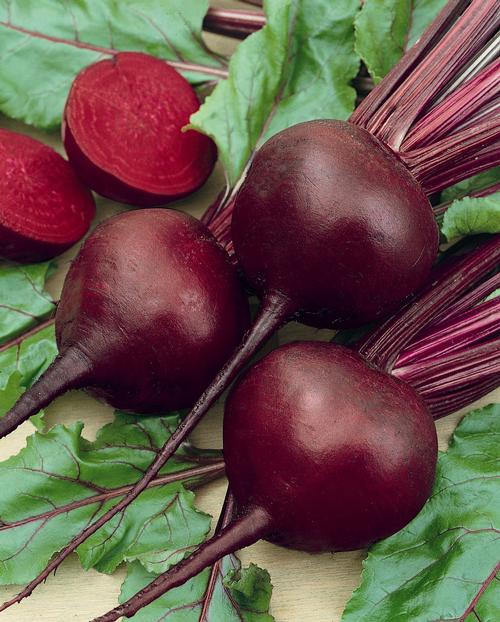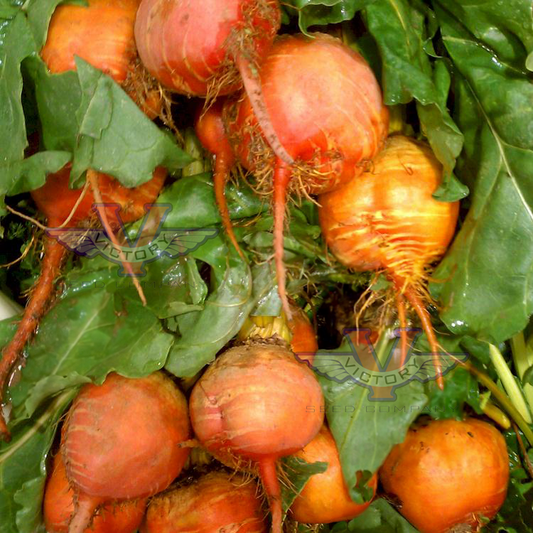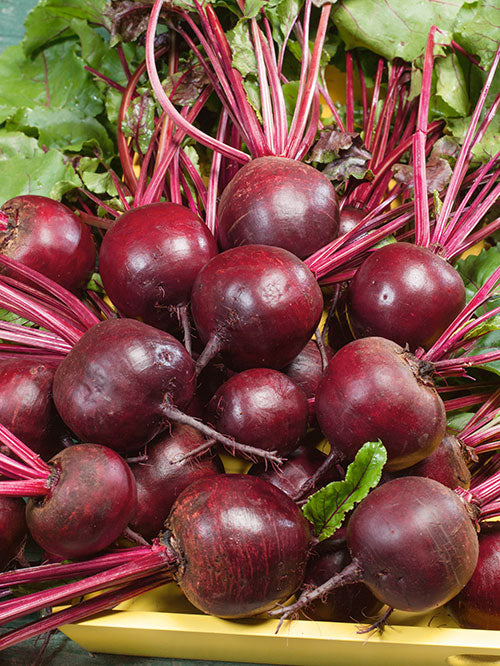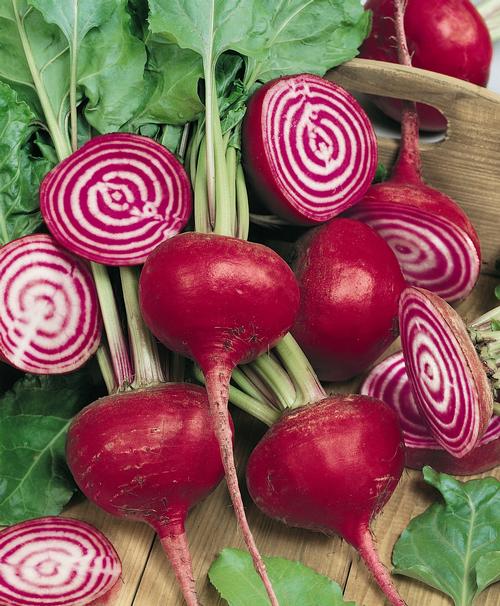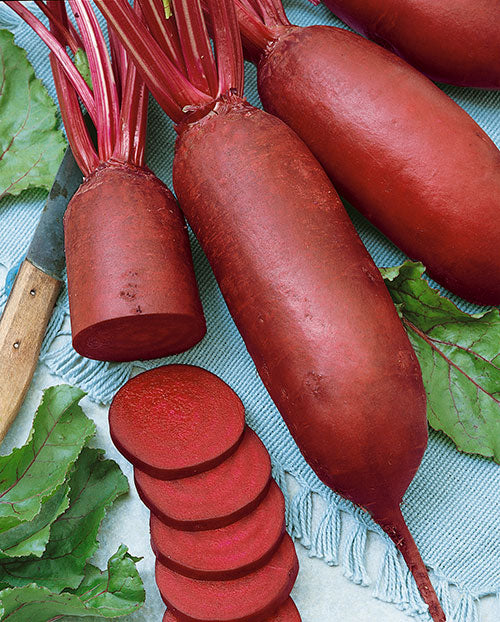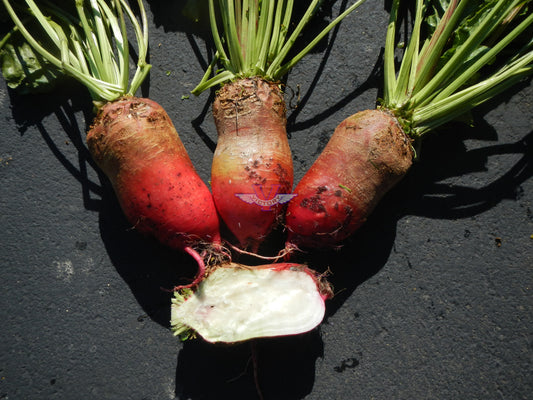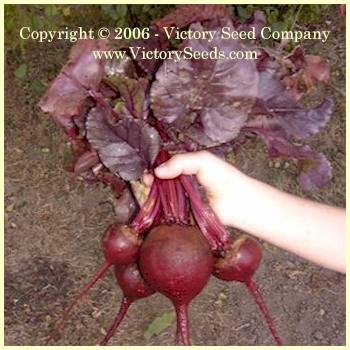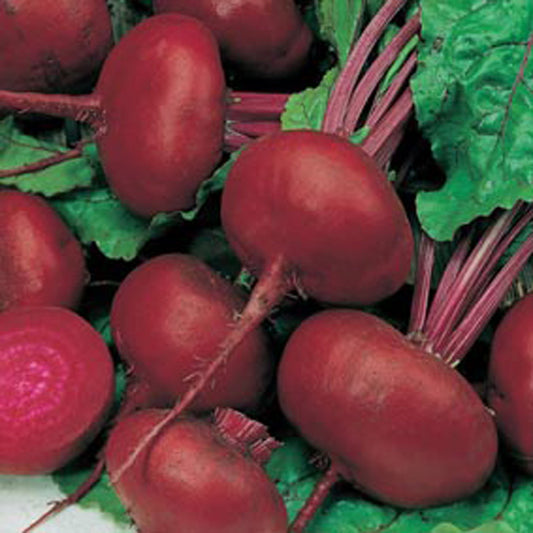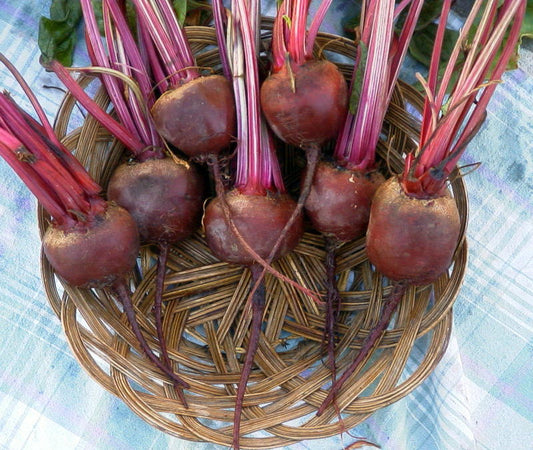-
Detroit Dark Red Beet
Regular price From $2.95 USDRegular priceUnit price per -
Burpee's Golden Beet
Regular price From $3.95 USDRegular priceUnit price per -
Ruby Queen Beet
Regular price From $2.95 USDRegular priceUnit price per -
Chioggia (Bull's Eye) Beet
Regular price From $2.95 USDRegular priceUnit price per -
Cylindra Beet
Regular price From $2.95 USDRegular priceUnit price per -
Red Mammoth Fodder Beet
Regular price From $2.95 USDRegular priceUnit price per -
Bull's Blood Beet
Regular price From $2.95 USDRegular priceUnit price per -
Crosby Egyptian Beet
Regular price From $2.95 USDRegular priceUnit price per -
Early Wonder Tall Top Beet
Regular price From $2.95 USDRegular priceUnit price per -
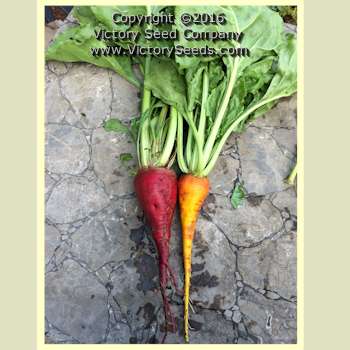 Sold out
Sold outThree Root Grex Beet
Regular price $2.95 USDRegular priceUnit price per
Beets are often noted as being the most "earthy" flavored of the root vegetables. This is caused by a compound called geosmin and is the same one that gives the air that distinct aroma after the soil is freshly worked or after a rain falls onto dry earth. Originally unsure whether the geosmin in beets was caused by soil borne microorganisms or produced by the beets themselves, scientific study seems to now indicate the latter. Regardless, geosmin is a natural and important part of a beet variety's flavor signature. If it was missing, so to would be a large portion of their flavor.
In a location that has well-drained soil and receives six to eight hours of full sun daily, sow seeds ¼ to ½-inch deep and one inch apart in rows spaced 12 to 24 inches apart. So that the roots have a chance to form properly, make sure that you have loosened the soil to one foot and raked it smooth. Firm the soil over the seeds and keep moist, making sure that the young roots do not dry out, until seedlings appear. After that, water weekly (or as required) in dry weather.
Poor stands are often the result of:
• Seeds planted too deeply.
• The soil has crusted over after watering or a heavy rain.
• Folks trying to be thrifty and not sowing enough seed. Although our seeds generally well exceed the Federal germination standard, which for beets is 65%, beets can naturally exhibit low germination rates. Note that the seedlings tend to emerge over an extended period of time. This is not necessarily a bad thing as the result is a stand of different sizes and ages of seedlings for an extended harvest.
Care and Management:
Like their cousin, Swiss Chard, beet "seeds" are actually multi-germ seed balls with each having the potential of developing into one to five plants. Because of this, it is very important to thin beets. When the plants reach 1½ to three inches in height, thin out the stand to one plant every three inches so that the roots are not crowded and can develop properly.
Your "thinnings" can be eaten as "baby greens" in your salad mix or lightly steamed as greens. Keep well weeded. Cultivate shallowly, and often, to keep the soil loose around the developing roots to help ensure uniform beets.
NOTE: When thinning a plant cluster, do not pull as you will disturb and potentially damage the plant you wish to keep. Instead, use small scissors to snip off the plants you are removing. Additionally, do NOT attempt to separate into separate "seeds" as you will likely damage them and they will not be able to germinate.
Harvest Tips: As the plants grow and the beet roots are developing, you can selectively, and sparingly, harvest leaves to be used as greens in salads. Do not take more than one-forth of the foliage from any one plant.
• When beets are ready to harvest, their shoulders will be protruding from the ground so you can easily see what size they are.
• Depending on your preference, you can pull them when they are small (about 1½ inches in diameter) or larger (up to about three inches).
• If left in the ground too long, especially through very hot weather, flavor and texture are affected.
• In general terms, beets are typically at the 1½ inch stage in 60 days; the common size for eating or canning. Storage: For fresh eating, beets can be stored in the refrigerator for several weeks. Cut the tops off of the beets but leave one inch of the stems on top of the roots. Beets store the best at 32°F and 95% humidity. Do not allow them to freeze. Saving Seeds: Beets are a biennial so seed production occurs during their second summer.
Cultivation Information
Planting:In a location that has well-drained soil and receives six to eight hours of full sun daily, sow seeds ¼ to ½-inch deep and one inch apart in rows spaced 12 to 24 inches apart. So that the roots have a chance to form properly, make sure that you have loosened the soil to one foot and raked it smooth. Firm the soil over the seeds and keep moist, making sure that the young roots do not dry out, until seedlings appear. After that, water weekly (or as required) in dry weather.
Poor stands are often the result of:
• Seeds planted too deeply.
• The soil has crusted over after watering or a heavy rain.
• Folks trying to be thrifty and not sowing enough seed. Although our seeds generally well exceed the Federal germination standard, which for beets is 65%, beets can naturally exhibit low germination rates. Note that the seedlings tend to emerge over an extended period of time. This is not necessarily a bad thing as the result is a stand of different sizes and ages of seedlings for an extended harvest.
Care and Management:
Like their cousin, Swiss Chard, beet "seeds" are actually multi-germ seed balls with each having the potential of developing into one to five plants. Because of this, it is very important to thin beets. When the plants reach 1½ to three inches in height, thin out the stand to one plant every three inches so that the roots are not crowded and can develop properly.
Your "thinnings" can be eaten as "baby greens" in your salad mix or lightly steamed as greens. Keep well weeded. Cultivate shallowly, and often, to keep the soil loose around the developing roots to help ensure uniform beets.
NOTE: When thinning a plant cluster, do not pull as you will disturb and potentially damage the plant you wish to keep. Instead, use small scissors to snip off the plants you are removing. Additionally, do NOT attempt to separate into separate "seeds" as you will likely damage them and they will not be able to germinate.
Harvest Tips: As the plants grow and the beet roots are developing, you can selectively, and sparingly, harvest leaves to be used as greens in salads. Do not take more than one-forth of the foliage from any one plant.
• When beets are ready to harvest, their shoulders will be protruding from the ground so you can easily see what size they are.
• Depending on your preference, you can pull them when they are small (about 1½ inches in diameter) or larger (up to about three inches).
• If left in the ground too long, especially through very hot weather, flavor and texture are affected.
• In general terms, beets are typically at the 1½ inch stage in 60 days; the common size for eating or canning. Storage: For fresh eating, beets can be stored in the refrigerator for several weeks. Cut the tops off of the beets but leave one inch of the stems on top of the roots. Beets store the best at 32°F and 95% humidity. Do not allow them to freeze. Saving Seeds: Beets are a biennial so seed production occurs during their second summer.

